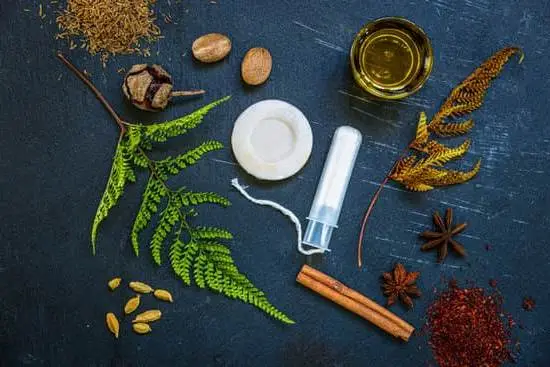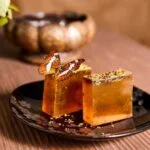Aromatherapy has been used for centuries to promote relaxation, improve mood, and treat various ailments. But, can aromatherapy oils be used as air fresheners? In this article, we will explore the concept of using essential oils to freshen the air in your home or office. We’ll delve into the science behind aromatherapy oils, discuss their benefits over synthetic air fresheners, and highlight popular oils for air freshening purposes.
Aromatherapy oils are derived from natural sources such as flowers, leaves, bark, and roots. These potent oils are known for their aromatic properties and have been traditionally used in aromatherapy practices to create a therapeutic environment. When diffused in the air, these oils can also serve as natural air fresheners, imparting a pleasant scent while offering potential therapeutic benefits.
The use of aromatherapy oils as air fresheners offers a natural alternative to synthetic sprays and plugins. With the growing awareness of harmful chemicals found in traditional air freshening products, many people are turning to essential oils as a safer and more eco-friendly option.
Additionally, these natural oils have the added benefit of improving mood and promoting relaxation through their aromatic properties. Throughout this article, we will explore various aspects of using aromatherapy oils to keep your living or working spaces smelling fresh and inviting.
The Science Behind Aromatherapy Oils
Aromatherapy oils are often used for their pleasant scents, but they also serve a scientific purpose when used as air fresheners. The molecules in essential oils can interact with the receptors in our noses, sending signals to the brain that can affect mood and emotion. When used as air fresheners, these oils can create a more pleasant and calming environment.
How Aromatherapy Oils Work to Freshen the Air
Essential oils contain volatile organic compounds (VOCs) that easily evaporate into the air. When these molecules are inhaled, they can stimulate the olfactory system and send signals to the brain’s limbic system – the area responsible for emotions and memories. This process is what makes aromatherapy effective in influencing mood and creating a calming atmosphere. Additionally, some essential oils have natural antibacterial properties which not only add fragrance to the air but also help purify it.
The Components of Aromatherapy Oils and Their Effects on the Environment
Aromatherapy oils are derived from different parts of various plants, including flowers, leaves, stems, bark, or roots. Each oil contains unique compounds that contribute to its specific scent and therapeutic benefits. When used as air fresheners, these components can linger in the environment and continue to provide subtle effects on those within the space.
For example, lavender oil is known for its relaxing properties while citrus oils like lemon or orange can promote energy and focus. These natural scents also have less impact on indoor air quality compared to synthetic air fresheners containing chemicals that may be harmful when inhaled.
Overall, understanding the science behind how aromatherapy oils work as air fresheners highlights their potential benefits beyond just fragrance. By utilizing these natural compounds, individuals <can aromatherapy oils be used as air freshener> effectively create a healthier and more enjoyable indoor environment.
Benefits of Using Aromatherapy Oils as Air Fresheners
Aromatherapy oils have gained popularity in recent years as a natural and effective alternative to traditional air fresheners. The benefits of using aromatherapy oils for air freshening purposes are vast, making them a popular choice for those looking to create a pleasant and relaxing environment in their home or office.
Advantages of Using Natural Oils
When it comes to air freshening, many people are turning to natural options over synthetic air fresheners due to concerns about indoor air pollution and the potential health risks associated with chemical-laden products. Aromatherapy oils offer a natural and non-toxic alternative that can help improve indoor air quality without introducing harmful substances into the environment.
Additionally, natural oils are known for their ability to eliminate odors rather than simply masking them, providing a more effective solution for creating a fresh and inviting atmosphere.
Improving Mood and Promoting Relaxation
In addition to their air freshening properties, aromatherapy oils also have the ability to impact mood and emotions. Certain essential oils have been shown to have calming, uplifting, or energizing effects on individuals, making them ideal for use in spaces where relaxation or focus is desired. By using essential oils as air fresheners, individuals can not only enjoy a pleasant aroma but also reap the mood-boosting benefits that these natural scents can provide.
Health Benefits
Many aromatherapy oils also offer potential health benefits when used as air fresheners. For example, certain oils like eucalyptus or tea tree oil are known for their antibacterial and antiviral properties which can help purify the air and promote respiratory health. This makes them an ideal choice for individuals who suffer from allergies or respiratory issues, as they can help create a cleaner and healthier indoor environment.
Overall, the benefits of using aromatherapy oils as air fresheners cannot be overstated. From improving indoor air quality to promoting relaxation and even offering potential health benefits, natural essential oils are a versatile and effective option for those looking to enhance their living or working space with pleasant fragrances.
Popular Aromatherapy Oils for Air Freshening
When it comes to using aromatherapy oils as air fresheners, there are several popular options that can create a delightful and inviting atmosphere in your home or office. Some of the most commonly used essential oils for air freshening purposes include lavender, lemon, peppermint, and eucalyptus. Each of these oils offers unique benefits in addition to their pleasant scents.
Lavender essential oil is well-known for its calming and relaxing properties, making it an excellent choice for creating a soothing environment. Lemon essential oil, on the other hand, has a refreshing and uplifting citrus scent that can help to promote feelings of energy and positivity.
Peppermint oil boasts a clean, minty aroma that can invigorate the senses and promote mental clarity. Finally, eucalyptus oil has a crisp, woody scent that is often associated with respiratory support and can help to create a refreshing and revitalizing atmosphere.
These essential oils can be used individually or blended together to create customized scents based on personal preference. Whether you prefer a floral, citrusy, or minty aroma in your space, there are countless combinations that
In addition to their pleasant fragrances, each of these popular aromatherapy oils also offers unique therapeutic benefits. These natural alternatives to synthetic air fresheners not only provide an appealing scent but also contribute to overall well-being through their potential mood-boosting and relaxation-inducing effects.
With their versatility and numerous advantages over traditional air fresheners, it’s no wonder that more people are turning to aromatherapy oils as an effective way to keep their living spaces smelling fresh and inviting.
How to Use Aromatherapy Oils as Air Fresheners
Aromatherapy oils can be used as air fresheners in a variety of ways, providing a natural and therapeutic alternative to commercial air fresheners. One popular method for using aromatherapy oils as air fresheners is through the use of oil diffusers. These devices disperse the essential oils into the air, filling the room with a pleasant and uplifting scent.
Another way to use aromatherapy oils as air fresheners is by creating your own DIY room sprays. By combining essential oils with water or alcohol in a spray bottle, you can easily mist the air and fabrics in your home to eliminate unwanted odors.
Additionally, aromatherapy oils can be used in potpourri to naturally fragrance a room. By placing a few drops of essential oil onto dried flowers, herbs, or wood shavings, you can create your own custom potpourri blend that not only freshens the air but also serves as an attractive decorative element.
For those who prefer a more hands-on approach, making homemade scented candles with essential oils allows for long-lasting fragrance throughout a space. Simply adding a few drops of essential oil to melted wax before pouring it into candle molds creates a calming and aromatic environment.
When using aromatherapy oils as air fresheners, it is important to consider the concentration and purity of the oil being used. Diluting essential oils with a carrier oil like coconut or jojoba oil helps to ensure safe and proper usage.
Additionally, being mindful of individual sensitivities and allergies when selecting and using essential oils for air freshening purposes is crucial. Overall, incorporating aromatherapy oils as air fresheners not only enhances the olfactory experience but also contributes to overall well-being by promoting relaxation and mood improvement within indoor spaces.
Safety Precautions When Using Aromatherapy Oils
Aromatherapy oils can be a great natural alternative to synthetic air fresheners, but it’s important to use them safely, especially when using them around pets and children. Here are some safety precautions to keep in mind:
- Keep oils out of reach of children: Aromatherapy oils should always be stored in a safe place away from little hands. Ingesting essential oils can be harmful, so it’s best to keep them out of reach.
- Avoid direct contact with skin: Some essential oils can cause irritation or allergic reactions when they come into direct contact with the skin. Always dilute oils properly before using them on the skin, and do a patch test first to check for any adverse reactions.
- Use caution around pets: Some essential oils can be toxic to certain animals, especially cats. Be sure to research which oils are safe for your pets, and avoid using diffusers or air fresheners with these oils in areas where your pets frequent.
Properly diluting essential oils is also crucial for safe use as air fresheners. In most cases, it’s best to mix essential oils with a carrier oil or water before using them in a diffuser or spray bottle. This not only helps distribute the scent more evenly but also reduces the risk of irritation from undiluted oils.
Aromatherapy Oil Blend Recipes for Air Freshening
Creating your own aromatherapy oil blends for air freshening can be both fun and rewarding. Here are a few simple recipes that you can try at home:
- Citrus Delight Blend: Combine 5 drops of sweet orange oil, 5 drops of lemon oil, and 3 drops of grapefruit oil in a diffuser for a refreshing and uplifting aroma.
- Lavender Mint Fusion: Mix 4 drops of lavender oil, 4 drops of peppermint oil, and 2 drops of eucalyptus oil with water in a spray bottle for a calming and invigorating scent.
- Spice Sensation Mix: Blend 3 drops of cinnamon bark oil, 3 drops of clove oil, and 2 drops of ginger oil in a diffuser for a warm and cozy atmosphere.
These blend recipes allow you to customize the scent profile according to your preferences while enjoying the benefits of aromatherapy. Just remember to always follow safety guidelines when using essential oils as air fresheners.
Aromatherapy Oil Blend Recipes for Air Freshening
Aromatherapy oils are not only beneficial for their therapeutic effects but can also be used as natural air fresheners in the home or office. Using essential oils for air freshening purposes not only adds a pleasant scent to the environment but can also promote a sense of well-being and relaxation. Here are some easy-to-follow recipes for creating your own air freshener blends using aromatherapy oils:
DIY Aromatherapy Oil Blends
- Lavender and Lemon: Combine 5 drops of lavender oil with 3 drops of lemon oil in a small spray bottle filled with water. Shake well before each use and spray around the room to freshen the air.
- Peppermint and Eucalyptus: Mix 4 drops of peppermint oil with 4 drops of eucalyptus oil in a diffuser to purify the air and create an invigorating atmosphere.
- Orange and Clove: Create a festive holiday scent by blending 6 drops of orange oil with 2 drops of clove oil in a pot of simmering water on the stove. Let it simmer on low heat to release the aroma into the air.
Creative Aromatherapy Oil Combinations
- Experiment with combining different oils such as bergamot, rosemary, and cedarwood for a unique earthy scent profile.
- Create a floral blend by mixing geranium, ylang-ylang, and jasmine oils for a calming and uplifting fragrance.
- For a refreshing and clean aroma, try blending tea tree, lemon, and grapefruit oils for an energizing effect.
By creating your own aromatherapy oil blends for air freshening, you have control over the ingredients and can enjoy the benefits of natural scents without any synthetic additives. These DIY recipes allow you to customize the fragrance according to your preferences while reaping the therapeutic benefits of essential oils. Whether you prefer citrusy, herbal, or floral scents, there is an endless array of combinations that can be used as air fresheners.
Conclusion
Aromatherapy oils have been used for centuries to promote relaxation, reduce stress, and improve overall well-being. But can aromatherapy oils be used as air fresheners? The answer is a resounding yes. Aromatherapy oils not only add a pleasant scent to the air but also provide numerous health benefits. When used correctly, they can effectively freshen the air in any space.
The science behind aromatherapy oils lies in their ability to release natural compounds into the air, known as volatile organic compounds (VOCs), which interact with our olfactory system and produce various effects on the body and mind. Different types of essential oils have different properties that affect mood and emotions. For example, lavender oil is known for its calming and relaxing effects, while citrus oils like lemon and orange can help uplift the mood.
One of the main benefits of using aromatherapy oils as air fresheners is that they are natural and free from harsh chemicals commonly found in synthetic air fresheners. This makes them a healthier option for both the environment and personal health. Additionally, these natural oils have been shown to have antimicrobial properties, which means they can help purify the air by eliminating harmful bacteria and viruses.
| Types of Aromatherapy Oils | Main Benefits |
|---|---|
| Lavender Oil | Calming and relaxing effects |
| Lemon Oil | Mood uplifting properties; antimicrobial effects |
| Peppermint Oil | Invigorating scent; helps clear the sinuses |
Additional Resources
In conclusion, aromatherapy oils can definitely be used as air fresheners, providing a natural and beneficial alternative to synthetic air fresheners. The science behind aromatherapy oils explains how these natural essences work to freshen the air by releasing pleasant fragrances and creating a calming atmosphere. The benefits of using aromatherapy oils as air fresheners are numerous, from improving mood and promoting relaxation to avoiding the potential health risks associated with synthetic fragrances.
By using popular aromatherapy oils such as lavender, peppermint, and eucalyptus for air freshening purposes, individuals can enjoy the scent profiles and therapeutic benefits of these natural essences. Additionally, there are various methods for using aromatherapy oils in the home or office for air freshening, whether through diffusers, sprays, or homemade blends. It’s important to note that while using essential oils as air fresheners offers numerous advantages, safety precautions must be observed when diffusing oils around pets and children.
In light of the wealth of benefits associated with using aromatherapy oils as air fresheners, it’s clear that natural alternatives can provide a safe and effective solution for air freshening needs. Encouraging readers to consider incorporating aromatherapy oils into their daily routines and home environments can lead to a healthier and more enjoyable living space.
For further reading on this topic or for additional resources regarding aromatherapy oils and air freshening techniques, readers can explore reputable websites or seek out additional literature on the subject.
Frequently Asked Questions
Can You Use Essential Oils as Air Freshener?
Yes, essential oils can be used as air fresheners. They not only add a pleasant scent to the air but also have aromatherapy benefits. When diffused, they can help uplift moods, promote relaxation, and even purify the air.
How Do I Make My House Smell Good With Essential Oils?
To make your house smell good with essential oils, you can use a diffuser to disperse the scent throughout the room. Additionally, you can mix a few drops of essential oil with water in a spray bottle and use it to mist carpets, curtains, or upholstery.
Which Oil Is Best for Air Freshener?
The best oil for air freshener will depend on personal preference and the desired effect. Common options include lavender for its calming properties, citrus oils like lemon or orange for their energizing scents, and peppermint for its invigorating aroma. Experiment with different oils to find the ones that work best for you.

Are you looking for a natural way to improve your health and wellbeing?
If so, aromatherapy may be the answer for you.





